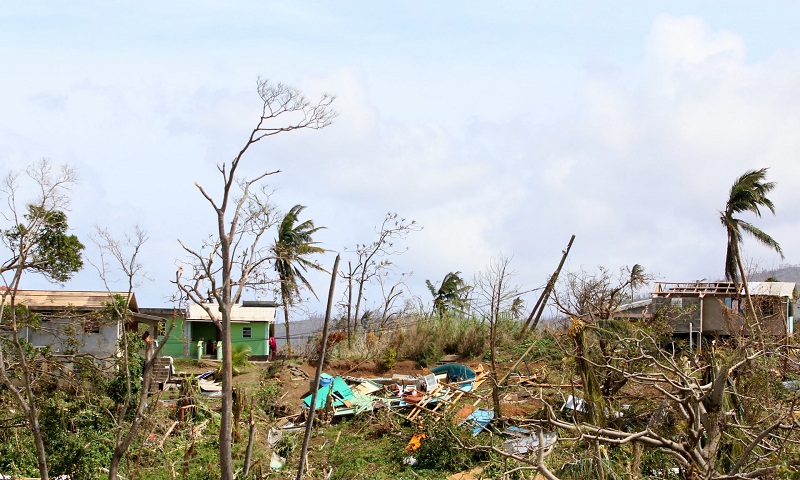Climate change in the Caribbean – learning lessons from Irma and Maria

As a Caribbean climate scientist, I am often asked to speak about how climate change affects small islands. In the aftermath of Hurricane Maria, one of two category five storms to batter the eastern Caribbean in just a week, three words resonate in my mind. The first word is “unfamiliar”. Scientific analysis shows that the climate of the Caribbean region is already changing in ways that seem to signal the emergence of a new climate regime. Irma and Maria fit this pattern all too well. At no point in the historical records dating back to the late 1800s have two category five storms made landfall in the small Caribbean island chain of the eastern Antilles in a single year. The intensification almost overnight from a tropical storm to a category five hurricane and the devastating intensity that lingered for several days are also unfamiliar, even to a region that is used to seeing hurricanes. Alongside other emerging climate patterns, there is a strong case to be made that there is something unfamiliar about the Caribbean’s climate today. We are seeing repeated and prolonged droughts, an increase in the number of very hot days, intense rainfall events causing repeated localised flooding, and rising sea levels that are consuming the beautiful beaches on which tourism in our region depends. The problem with unfamiliarity is that daily existence in the Caribbean is built on familiar patterns of climate. Our economies are premised on industries and sectors that are extremely sensitive to climate variations, such as tourism and agriculture. In a year that follows expected patterns and pulls no surprises, we see favourable economic growth and improvements in our quality of life. Even when we’ve seen bad weather, we have always had a certain familiarity with the limits of how bad it can be. Until now, newer infrastructure in the Caribbean has largely withstood the ravages of hurricanes and tropical storms, as their design has accounted for the upper bounds of extreme weather experienced in the past. Irma and Maria threw out the notion of planning and preparedness based on the expected and the familiar. Their ferocity destroyed even the strongest evacuation shelters and brought devastation of catastrophic proportions to our tiny islands. Just as climate change is heralding in an era marked by the unfamiliar, we need a paradigm shift in our approach to development planning in highly vulnerable regions. The second word that comes to mind is “unprecedented”. A business-as-usual scenario without global action suggests that by the end of the current century, the Caribbean region will warm a further 2-3C over the 1C already seen in the last century. We project annual rainfall amounts will decrease by up to 40%, posing a significant challenge to already water stressed islands. Projections also show sea levels rising by 1-2 metres, far exceeding the rise already recorded.

